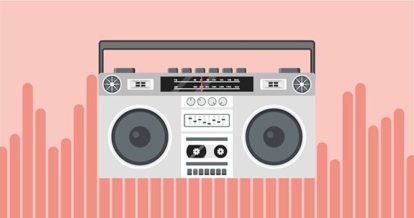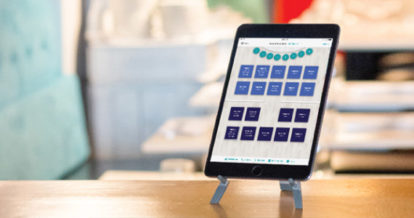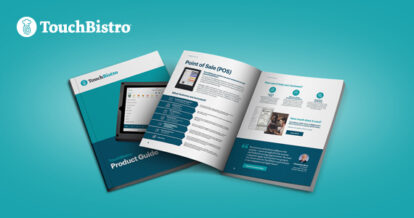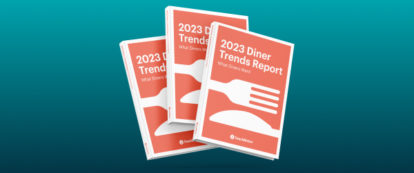What kind of music defines your venue? Maybe you blast the latest hits or your dining room is awash with the smooth vocals of a classic crooner. Whatever your musical tastes, the reality is that you’re required to pay for music licensing for your restaurant to gain access to them.
Your restaurant music license covers dues to the artist, composer, and publisher. Sounds simple, right? Except it’s not! Here’s what you need to know about how to pay for music licensing and the types of music licenses for your restaurant.
What Does “Music Licensing” Mean?
Music has become such a large part of our day-to-day that we tend to think of it as free entertainment – but it’s not. Music is a commodity that is protected by copyright law. Playing your favorite tunes without paying, whether from your personal record collection or even from the old jukebox in the corner, is illegal.
Performing rights organizations (PROs) are the go-between for songwriters and performers and the businesses that play their music. In the United States there are BMI, ASCAP, and SESAC, and in Canada, SOCAN and CMRRA. These PROs collect licensing fees in exchange for permission to use the music, then pass the money on to the songwriters and performers.
If your restaurant is using the work of artists to create ambiance, that contribution must be recognized and compensated. This is the role of PROs in music licensing.
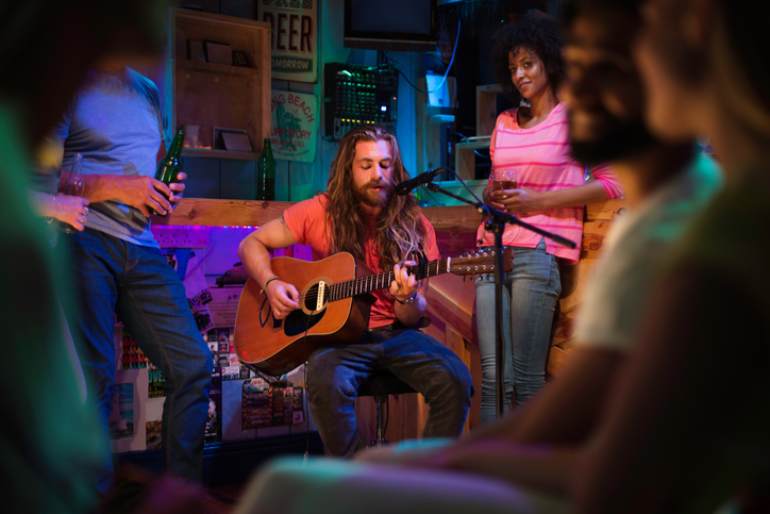
What If I Don’t Pay?
Not paying is no joke. If you’re playing music without paying for it, you’re at risk of being sued in federal court – which isn’t cheap.
Still, there are some circumstances in which you don’t have to pay restaurant music licensing fees. You don’t have pay for music that is in the public domain, meaning songs that were released in or before 1922. You also don’t have to pay for music played from a television or radio. But even if you have a local band play on the weekends or if you’re using a paid streaming service – you still have to pay.
So How Do I Pay?
You have to pay the performing rights organizations (US: BMI, ASCAP, SESAC. Canada: SOCAN, CMRRA.), and this is where it gets tricky. Because not all PROs cover all songs and artists, obtaining a license from one PRO isn’t enough. The only way to cover all music played in your venue is to obtain a blanket license from each organization.
American PROs: ASCAP vs. BMI vs. SESAC
ASCAP License
Who are they? The American Society of Composers, Authors and Publishers (ASCAP) is the oldest PRO in the United States, established in 1914. ASCAP is governed by its membership of composers, songwriters, musicians, and music publishers. ASCAP represents more than 10 million works and 625,000+ members.
How are fees determined for an ASCAP license? Fees for a music license for restaurants are based on the type of music the business uses, capacity, and how many days a week it hosts lives music. Here’s how to get an estimate for your restaurant.
BMI License
Who are they? Broadcast Music Inc. (BMI) represents almost 13 million works and 800,000 songwriters, composers, and music publishers. It’s estimated that one out of every two songs on the radio is BMI music. BMI extends beyond the U.S., with music from more than 90 countries.
How are fees determined for a BMI license? To get a license to play music in a restaurant with BMI, restaurant owners must apply by filling out this form. Rates depend on total capacity and, similarly to ASCAP, whether you’re using things like a jukebox, hosting live music, or charging admission.
SESAC License
Who are they? The Society of European Stage Authors and Composers’ (SESAC) pays out royalties to artists monthly rather than quarterly, and membership is by invitation only. Smaller than ASCAP and BMI, SESAC represents 400,000 songs and 30,000 affiliated songwriters, composers, and music publishers.
How are fees determined for an SESAC license? Similarly to ASCAP and BMI, fees are determined based on capacity and method of delivery, such as live music, website, or jukebox. You can download a license and determine your cost here.
Canadian PROs: SOCAN vs. CMRRA
SOCAN License
Who are they? The Society of Composers, Authors and Music Publishers of Canada represents 150,000 songwriters, composers, and music publishers, and more than 130,000 organizations and businesses are licensed to play SOCAN artists. SOCAN states that it gives 90 cents of every dollar back to music creators and publishers.
How are fees determined for a SOCAN license? Businesses must determine which tariffs their use of music is subject to. For example, if you’re planning to use background music, the minimum license fee is $95.51; additional costs are added based on the room size and number of years in operation. You can apply to join here.
CMRRA License
Who are they? The Canadian Musical Reproduction Rights Agency Ltd. was established in 1975 and represents large multinational music publishers and individual songwriters. In May 2017, CMRRA was acquired by U.S.-based SoundExchange, and up-and-coming U.S. organization that collects and distributes digital performance royalties for 130,000 recording artists and master rights owners.
How are fees determined for a CMRRA license? You will likely need to purchase a mechanical licensing agreement or a pay-as-you-press license. According to the CMRRA, they “currently issue mechanical licenses on the basis of 8.3 cents per song, per copy manufactured, where the playing time is five minutes or less.” You can decide on what’s right for your business by viewing this page.
How Much Does a License Cost?
Music licenses cost restaurants anywhere from a couple hundred to a couple of thousand dollars per year. When obtaining music licenses, make sure to provide specific information like the square footage of your venue and how often you play music, as these factors will impact the amount you are required to pay.
Music Streaming Services
Another option is to pay for a licensed music streaming solution, which does the dirty work of vetting approved artists and playing only that music. Music streaming services tend to be cheaper, but the number of artists available to play can be more limited – and the option to customize your playlist or throw on your iTunes account is off the table.
Comparison: Music Streaming Services for Businesses
Pandora for Business
$26.95/mo. + $99 for mood media player
Includes: Music licensing, the ability to create stations and standardize music across franchises
SiriusXM for Business
$35.99/mo.
Includes: Music curated for restaurants, streaming through internet or satellite, music licensing
SoundTrack for Business (Spotify for Business)
$35.99/mo.
Includes: Music licensing, offline mode, music scheduling
JukeBoxy
$29.95/mo.
Includes: 25 million songs for mobile, tablet, Mac, and PC, music licensing, and music scheduling
Music licensing for restaurants might seem like yet another cost to add to your long list of restaurant expenses. The good news is that there are a lot of options and resources to help make the process as easy as possible for your restaurant. Happy listening!
Free Restaurant Cleaning Checklist
Subscribe to the TouchBistro Newsletter

